| SEARCH |
Painting Monet's Water Lilies
Honoring an artistic legacy
Sunday, September 1, 2024
I just returned from my first trip to France, a journey that took me to the heart of Monet's artistic legacy, from the bustling museums of Paris to the tranquil gardens of Giverny. Tracing Claude Monet's footsteps, I delved into the origins of his remarkable water lily series, which comprises over 250 oil paintings.
Following in Monet''s Footsteps
In Paris, I saw Monet’s original water lily paintings in three museums, including Musée Marmottan Monet, Musée de l'Orangerie, and Musée d'Orsay. From Paris, I traveled by riverboat to Giverny, where I spent two mesmerizing days exploring Monet’s gardens and water lily pond, soaking in the shifting lights and shadows.
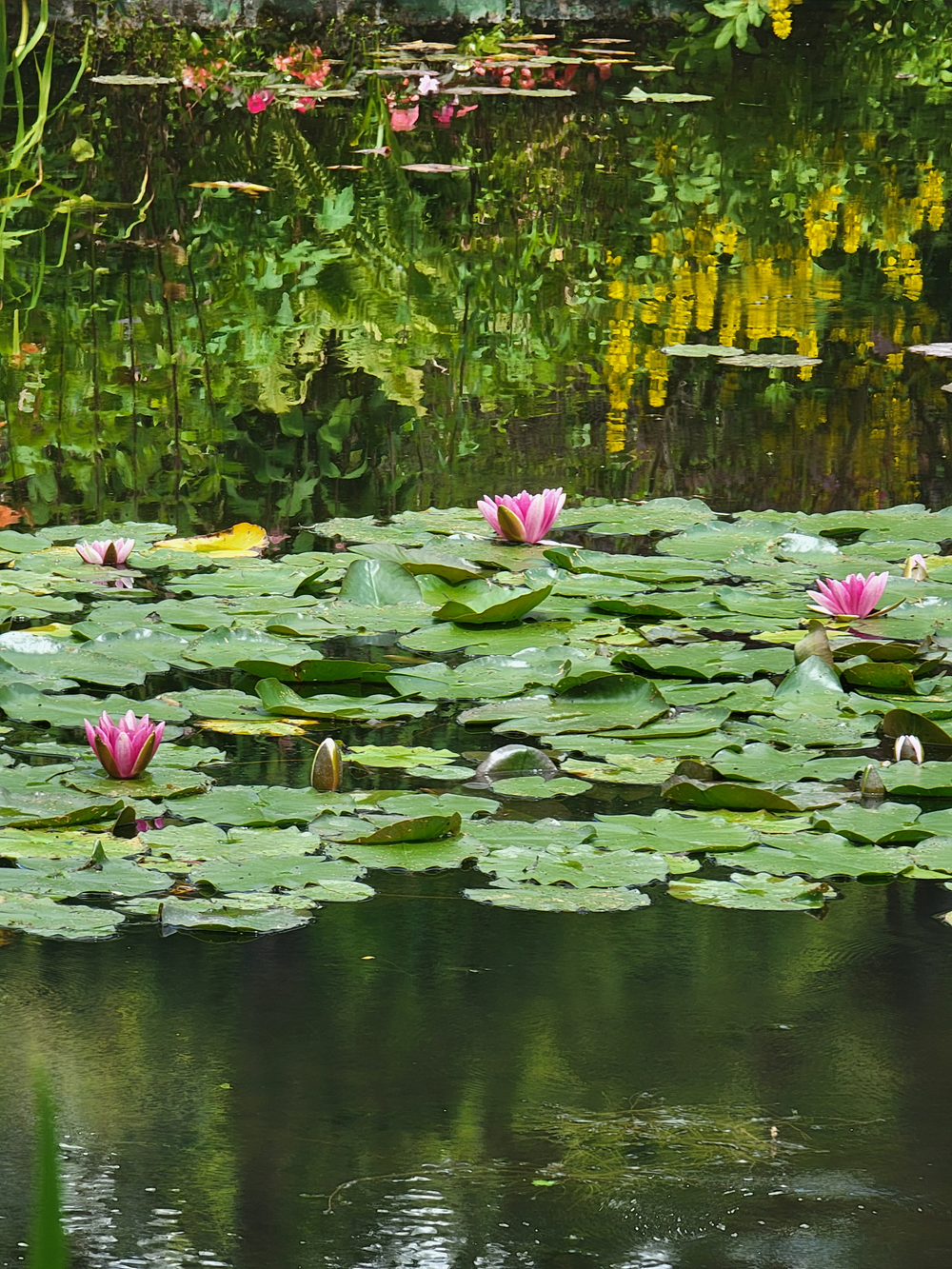
When I walked around the bend and saw Monet’s lily pond for the first time, it felt like stepping directly into one of his masterpieces. I was immediately inspired by the vibrant range of blues and greens contrasting with the colors of the sky. I realized all at once that the dark squiggles in many of Monet’s water lily paintings were the reflections of weeping willows, which grow around his pond, their long, kinky leaves creating interesting patterns in the water. I took hundreds of reference photos, and the experience transformed my appreciation for water reflections.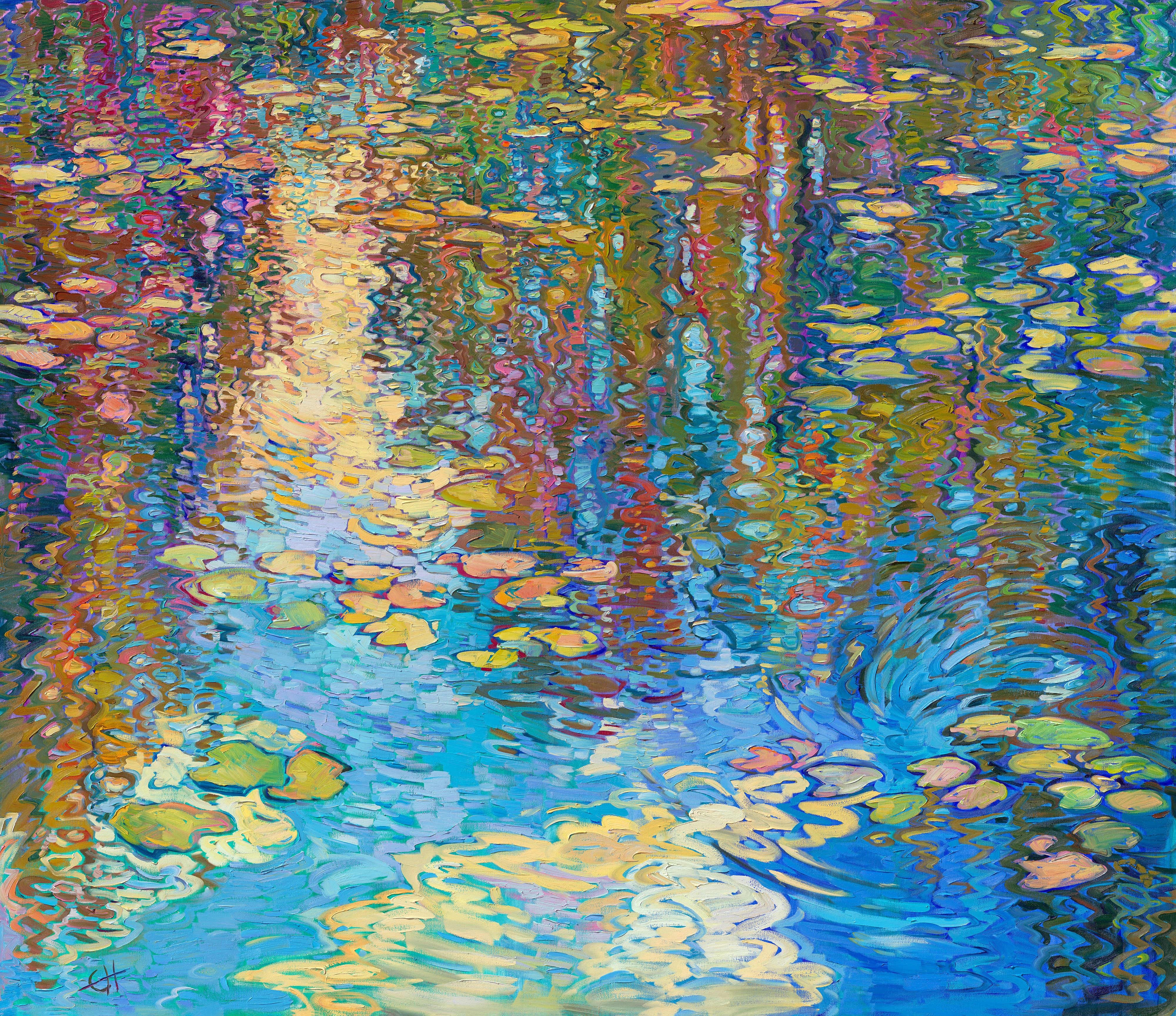
Monet's Lilies by Erin Hanson, 2024
Where did Monet find his water lilies?
I also visited Latour-Mariac, the historic water lily farm that supplied Monet with his lily plants and inspired him to establish his own water lily garden.
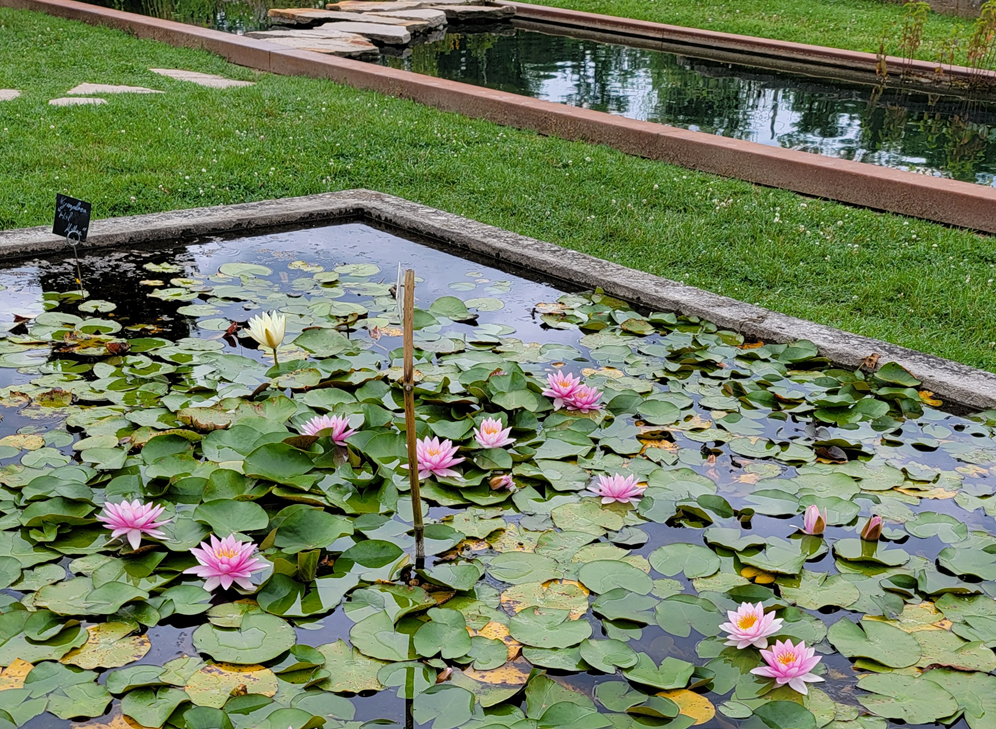
The story goes like this:
Latour-Marliac was a biologist and the first horticulturist to hybridize white European water lilies with the more delicate (but beautifully multi-colored) tropical species. After perfecting his colorful lilies, which had never been seen before in Europe, he brought them to the World’s Fair in Paris in 1889. It happened that Claude Monet was exhibiting his paintings just a few booths away, and there, he discovered Latour-Marliac’s waterlilies.
Monet was inspired to bring these rainbow-sherbet-colored water lilies back to his new home in Giverny. He re-routed a nearby stream and dug out the ground to create a large pond.
At first, Monet ran into trouble with his water lilies–they kept dying and refusing to bloom, and his solution was to increase the filtration and cleanliness of the pond. However, Latour-Marliac helped Monet and showed him that water lilies thrive in mucky, stagnant water. After turning off his filtration systems, Monet was finally able to get his water lilies to bloom.
Once his water lilies were blooming beautifully, Monet jealously guarded his water lily pond against prying eyes, allowing only close friends and relatives to see his horticultural masterpiece.
Exploring Latour-Marliac’s impressive water lily farm in person was like stepping into another moment of history. I saw over 200 varieties of water lilies in as many shades of color. Latour-Marliac and Claude Monet are jointly responsible for popularizing water lilies as a modern garden flower.
Back in my studio in Oregon, surrounded by the serene landscape of wine country, I began translating my experiences and insights into a new series of water lily paintings, including my largest water lily painting to date, entitled "Monet's Lilies."
Erin Hanson painting reflections for Monet's water lily pond
I can hardly wait to start my next piece. I understand now how Monet continued to be inspired and painted 250 paintings of water lilies. I hope you enjoy my new works inspired by Monet’s Garden.
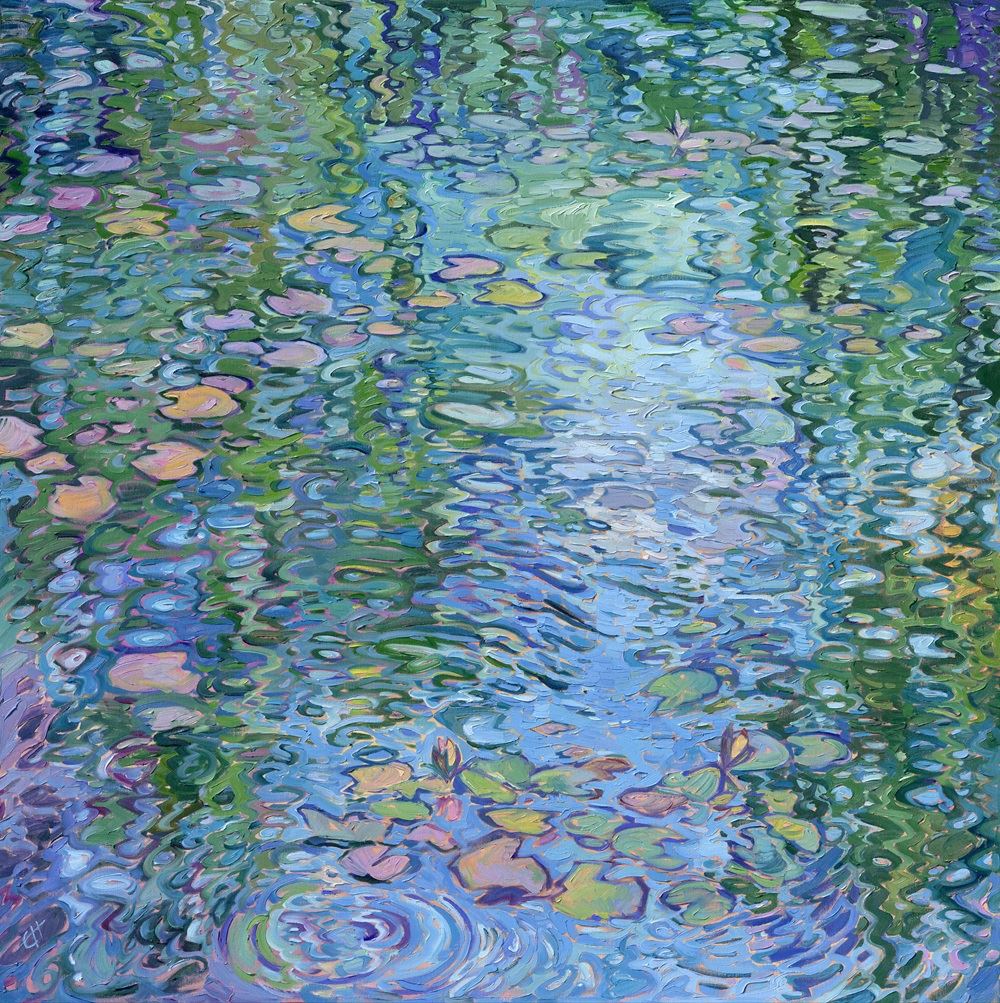
Monet's Lillies II by Erin Hanson, 2024
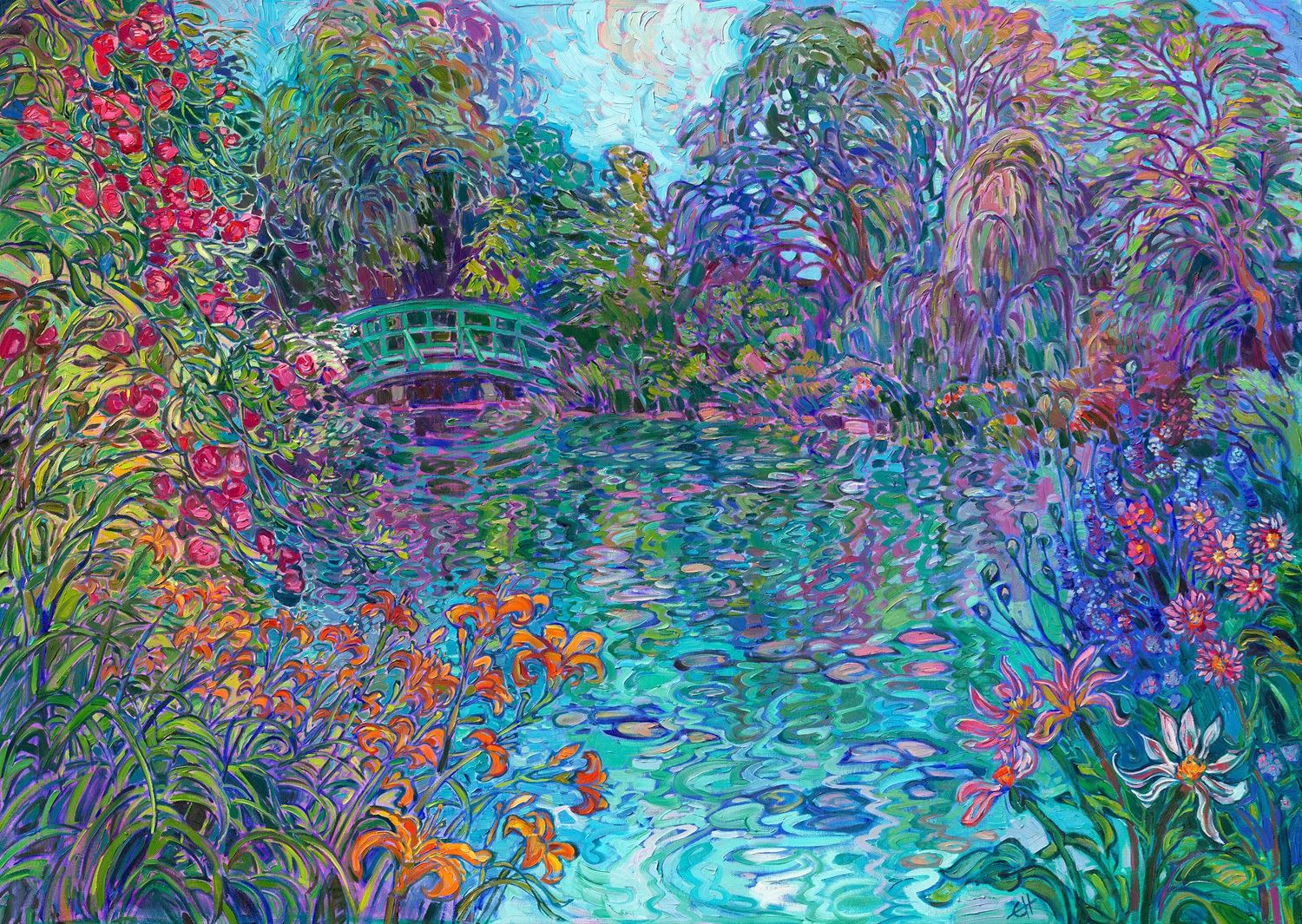
Monet's Bridge by Erin Hanson, 2024
 ERIN HANSON has been painting in oils since she was 8 years old. As a young artist, she worked at a mural studio creating 40-foot-tall paintings on canvas, while selling art commissions on the side. After getting a degree in Bioengineering from UC Berkeley, Erin became a rock climber at Red Rock Canyon, Nevada. Inspired by the colorful scenery she was climbing, she decided to paint one painting every week for the rest of her life. She has stuck to that decision ever since, becoming one of the most prolific artists in history. Erin Hanson's style is known as "Open Impressionism" and is now taught in art schools worldwide. With thousands of collectors eagerly anticipating her work and millions of followers online, Hanson has become an iconic, driving force in the rebirth of contemporary impressionism.
ERIN HANSON has been painting in oils since she was 8 years old. As a young artist, she worked at a mural studio creating 40-foot-tall paintings on canvas, while selling art commissions on the side. After getting a degree in Bioengineering from UC Berkeley, Erin became a rock climber at Red Rock Canyon, Nevada. Inspired by the colorful scenery she was climbing, she decided to paint one painting every week for the rest of her life. She has stuck to that decision ever since, becoming one of the most prolific artists in history. Erin Hanson's style is known as "Open Impressionism" and is now taught in art schools worldwide. With thousands of collectors eagerly anticipating her work and millions of followers online, Hanson has become an iconic, driving force in the rebirth of contemporary impressionism.





